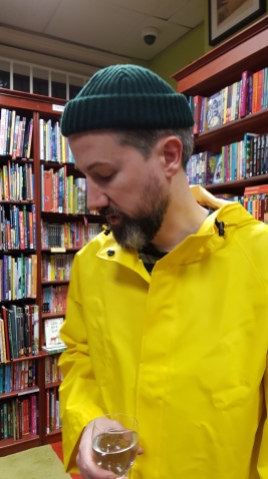Last weekend I went for my annual weekend away to Wales on the Writers’ Holiday to concentrate on my writing. I took my Work In Progress and (spoiler alert) got absolutely loads done. I’ve been to Writers’ Holiday for several years as the atmosphere is so brilliant and I always manage to come back with a few thousand words written.
If you have not been to Writers’ Holiday you don’t know what you’ve been missing. It was set up in 1986 by Anne Hobbs, is run by writers, for writers and receives no financial assistance from any source whatsoever, wrapped up in a totally informal and relaxed setting. It’s up to you what you choose to do but it’s all there for you just take what you want. You get to choose a wide selection of courses or you can use the time to work on your own WIP, or if you prefer just to chill and relax.
One of the great things about Writers’ Holiday it is not too much money. In fact, you get a lot for your money. The fee includes breakfast, lunch and dinner, all weekend workshops and collection / return to Fishguard and Goodwick train stations.
The venue is The Fishguard Bay Hotel which nestles in rich woodland above Fishguard Harbour and overlooks some of the most beautiful and spectacular coastline in Wales, guests can view the lower town in the distance across the bay.

This was setting for Dylan Thomas’ Under Milk Wood, when stars like Glynis Johns, Richard Burton, Peter O’Toole and many others stayed here. It was also the base for the filming of Moby Dick. In 1979, this former Great Western Railway hotel was designated as a building of historic and architectural interest. Set in a commanding position overlooking Cardigan Bay, the hotel offers an atmosphere second to none with oak panelled walls, high ceilings and an air of Victorian splendour.
I set off in plenty of time, having started my packing a few days before. It was hard as my son was home that week from University but as my husband and boys planned to paint the hallway, stairs and landing walls, it was probably better I was out of it.
The course I choose to do was Get your Non-fiction Book Written and Published with Simon Whaley. I’ve done Simon’s courses before and they are always inspirational and motivational. So I did not research the course as much as I would have done a new course or venue. Even so, I decided to write down a few questions of things I wanted to know about writing non-fiction books to make my life easier. The last thing I wanted was to not ask and get home and wish I did . I’ve learnt the hard way not to be afraid of asking questions.
I also thought about what I really wanted from the course. Was I just looking for a fun weekend away or did i have a goal in mind I had a goal or two, firstly I am on a tight schedule with my latest commission so needed to get a lot of work done and the ideal time was on the train there and back. The other reason is that although I have written some non-fiction books, I have a few more non-fiction book ideas I want to write. My aim was to kick start myself into doing it. It was a small group which is often nicer as you can get more from a course this way.
It wasn’t all work there is also some fantastic meals you get a buffet breakfast and a choice from three starters, main meals and puddings for lunch and dinner.
There is also a book room where both the course leaders and delegates can bring there own published books to sell.

You’ll be pleased to know, I managed to work on three non-fiction book ideas and developed them and also my latest commission which I had given myself a daily schedule. Now all I have to do is carry on the momentum and make an effort to write the book.



































